The new Vortex Triumph HD binocular was put to the test in the field and at the range. Scott Einsmann
We may earn revenue from the products available on this page and participate in affiliate programs. Learn More ›
I’m an archer and a whitetail hunter, so I need a binocular that can help me see 3D scoring rings in dark shadows and tell the difference between a log and a deer at twilight. I don’t need to judge an animal from a mile away, so while I love expensive glass, I don’t think it’s worth the investment for my needs. You could say that I prefer cheap beer while having an appreciation for champagne.
But even with my preferences for affordable glass, I was skeptical of the latest Vortex binocular, the Triumph HD, which costs $100. So, I put this budget binocular to the test against binoculars costing $250 to $1,000. Here’s what I saw.
Vortex Triumph HD Specs and Features
- 10×42
- Prism Type: Roof
- Weight: 22.9 ounces
- Eye Relief: 17.0 mm
- Linear Field of View: 334 feet
- Includes: GlassPak binocular harness, neck strap, lens covers, and lens cloth
- Price: $100
- Made in China
Adjustable Eyecups and Diopter
The eye cups have three positions, fully collapsed, halfway out, and all the way extended. There’s also a diopter adjustment ring, which is located on the right eyepiece. Read our article about binocular anatomy for information on how to adjust eye cups and the diopter ring.
Waterproof and Fogproof
The Triumph is nitrogen gas purged, preventing fogging over various temperatures. It also uses o-ring seals for waterproofing.
Tripod Mount
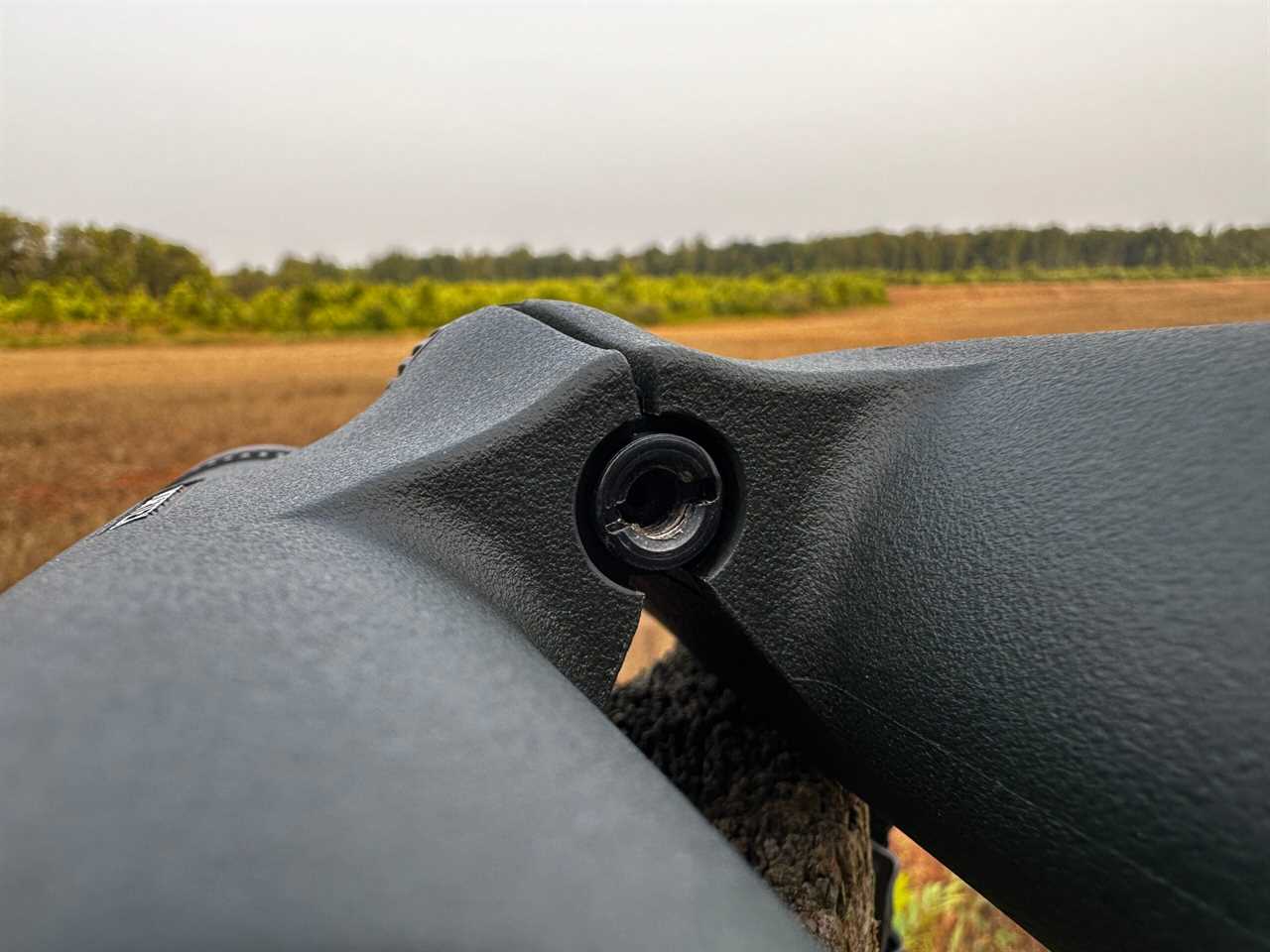
The Tripod mount location on the Vortex Triumph HD. Scott Einsmann
The Triumph is threaded to accommodate a tripod mount. Simply unscrew the cap that’s located on the hinge and screw in the adapter of your choice.
Included Accessories
The binocular includes a neck strap, rubber lens covers, and a chest harness. I used the bino harness while turkey hunting this year, and found it to be comfortable.
Testing the Vortex Triumph 10×42 in the Field
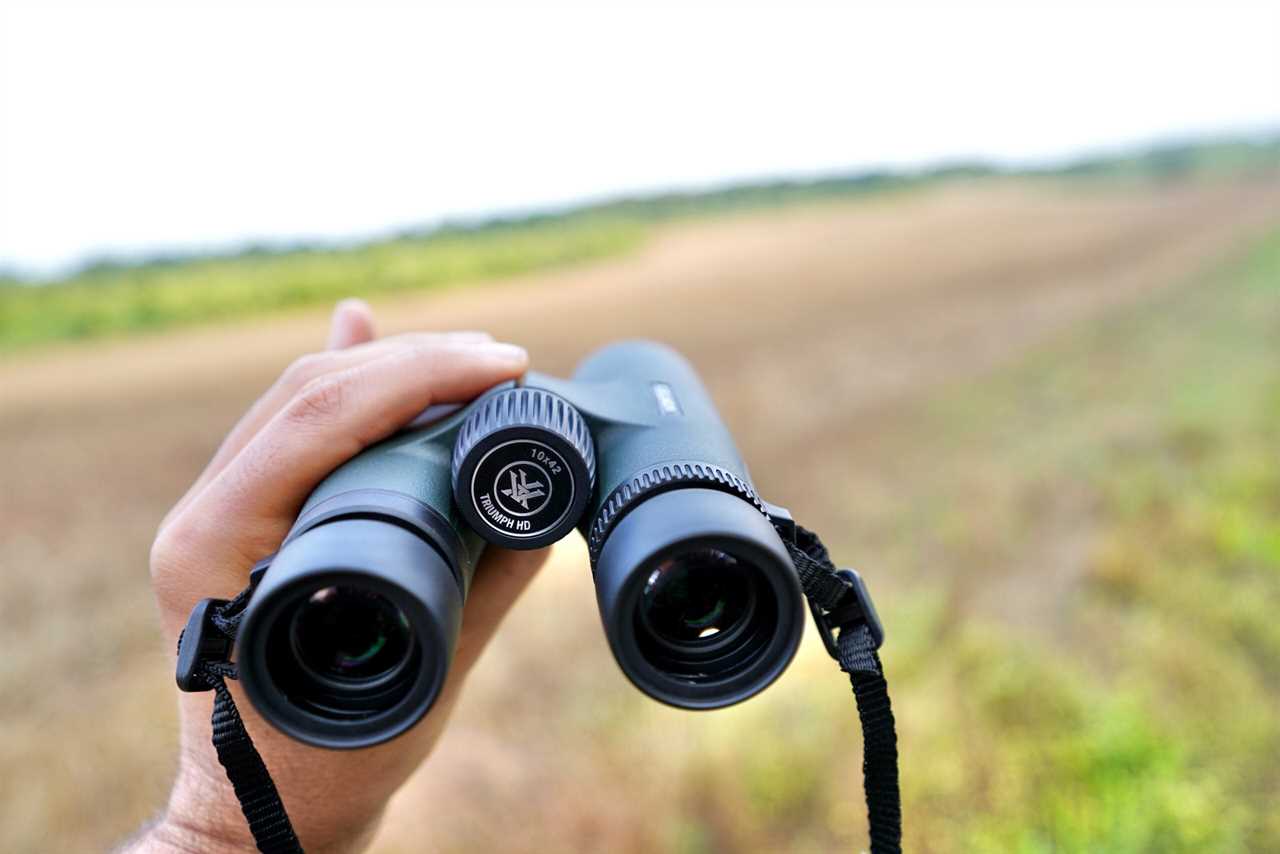
The author used the Triumph while turkey hunting and summer scouting for whitetails. Scott Einsmann
I turkey hunted with the Triumph, and it had familiar ergonomics like adjustable eyecups, a textured finish, and a smooth-turning focus wheel. I used the binocular to glass toms strutting 300 yards away and to see the head of a hung-up tom in the woods at 100 yards. By the end of the season I was convinced the new Vortex was a capable turkey hunting binocular.
But, the question I had, and I’m sure you’re wondering, is how much performance are you really giving up when going with a cheap binocular? So I grabbed my Maven B.6 10×50 ($1,000), Leupold BX-4 Pro Guide ($650), and my old Vortex Diamondback (which cost around $250 and was discontinued in 2020) for a head-to-head test.

The healed arrow holes on this 3D target were a key detail in the testing. Scott Einsmann
I set a 3D target at 50 yards and mounted each bino to a tripod. I looked at the overall brightness, image clarity, and detail. I also placed a target 5 yards in front of the 3D target to rack the focus between the two. I focused on the faintly visible arrow holes in each target. This is practical for 3D archers because spotting arrow hole trends in targets provides valuable insight on how to judge the target.
At 50 yards, the Maven B.6 stood out from the pack. The details were more vivid. Instead of having to strain to see the arrow holes, they plainly stood out. Around the edges, the image was sharp.
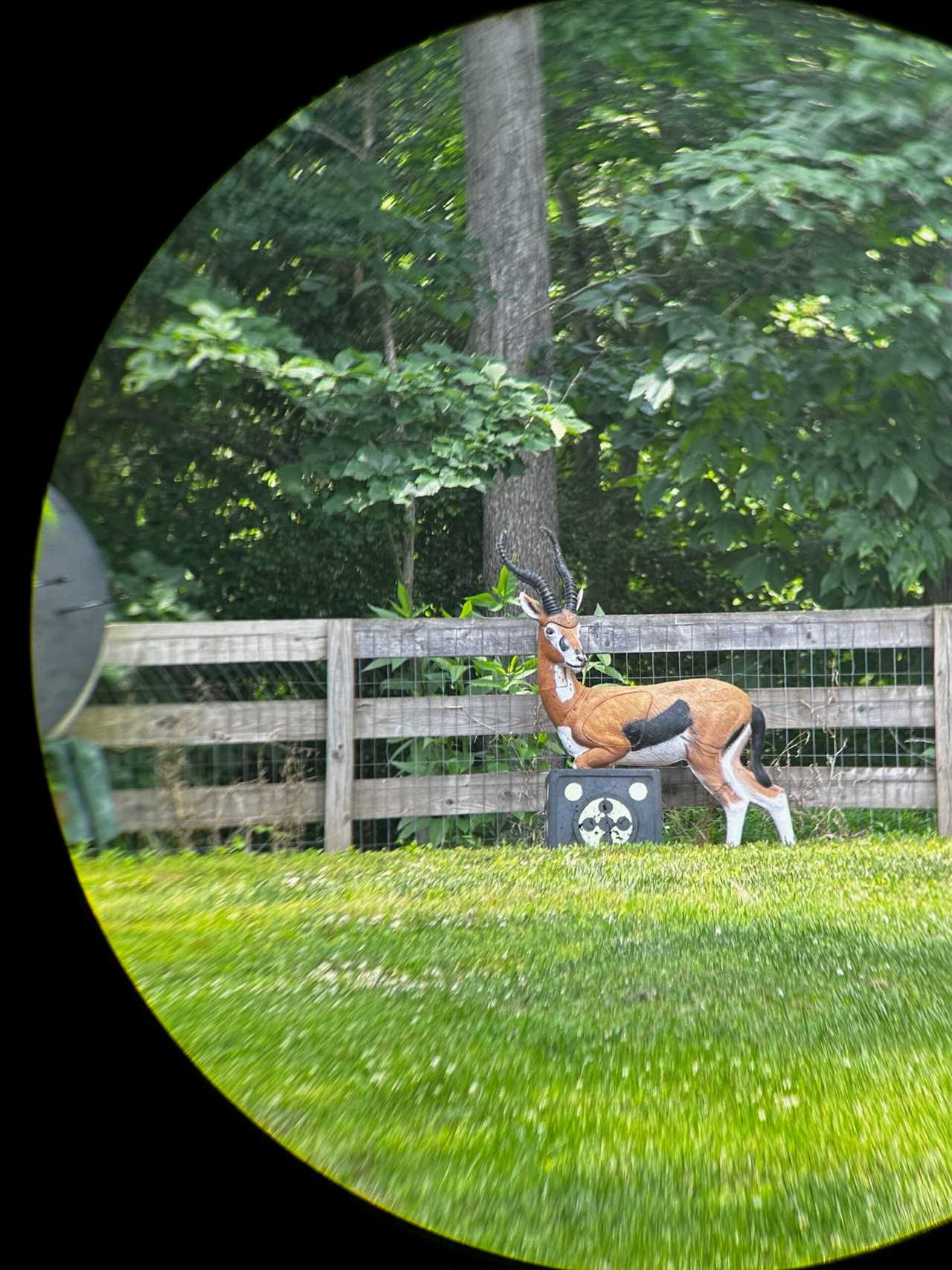
BX-4 Pro Guide
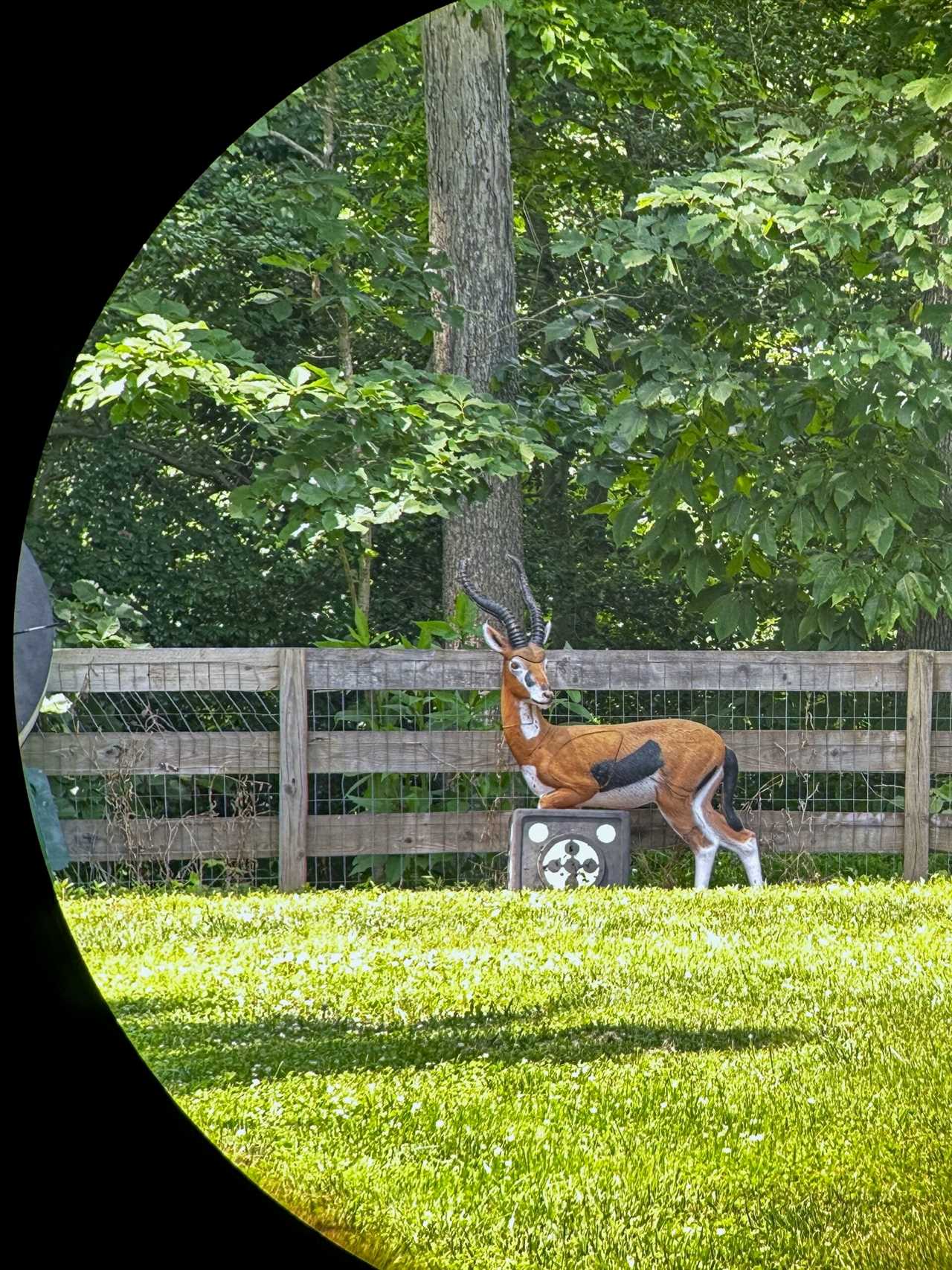
B.6
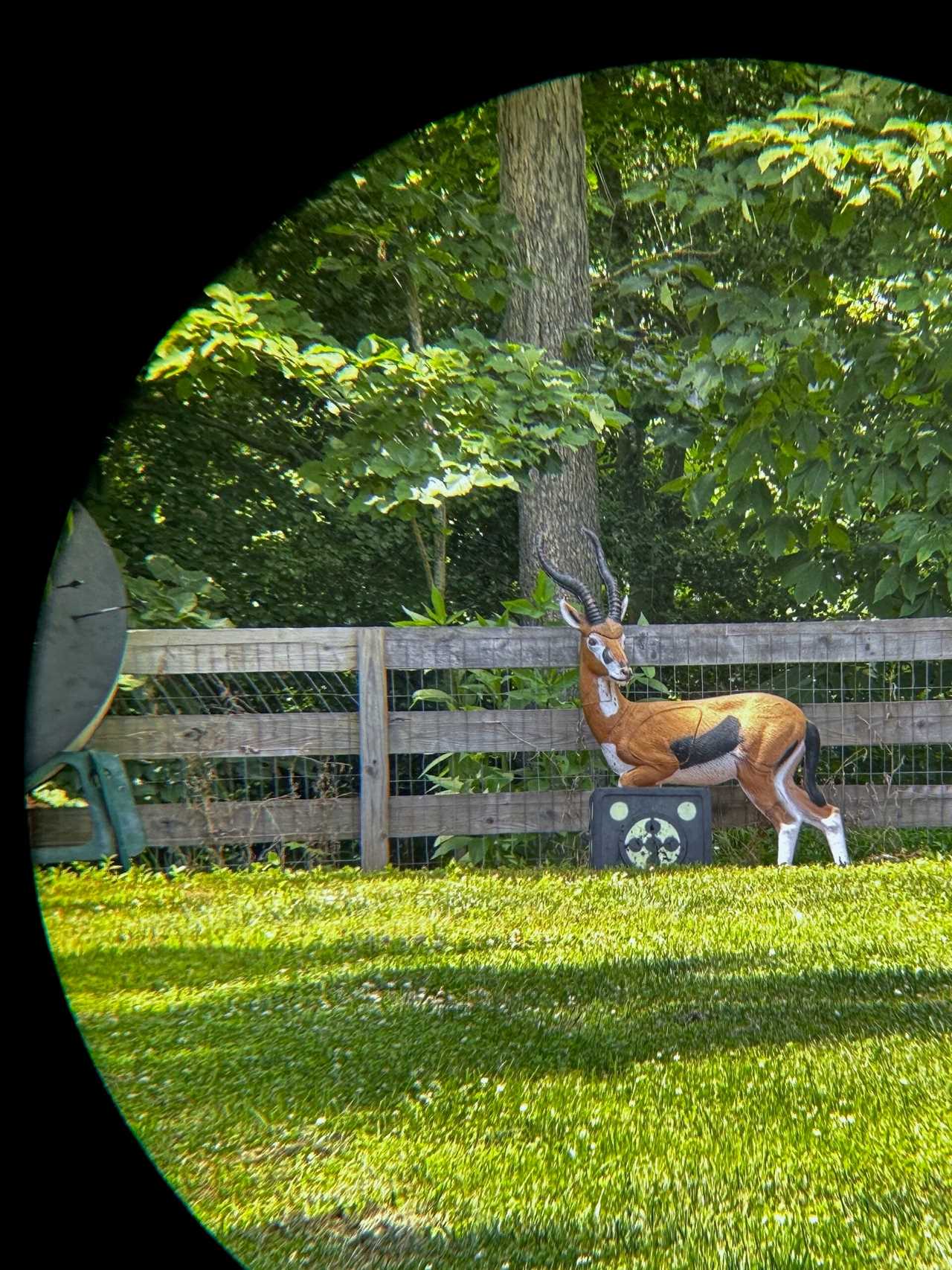
Triumph HD
Photos taken through the BX-4, B.6, and Triumph at 50 yards.
When comparing the Triumph to the Diamondback and the Pro Guide, things got a lot more interesting. The Triumph has a far superior focus wheel; it’s smoother than the Leupold and not as stiff as the Diamondback. In racking focus between the two targets, I found the Triumph to have a much finer focus than the Diamondback and were on par with the BX-4 Pro Guide. I do think the Leupold binocular showed more detail, and the arrow holes were easier to see.
I stepped back to 80 yards and ran the same test. The faintest arrow hole was only visible with the Maven, and I had trouble making it out with the others. Again the $1,000 binoculars were brighter and produced a more detailed image than the less expensive binoculars. The BX-4 looked brighter than the Triumph, but they were equal in their level of detail. The old Diamondback couldn’t keep up at this range.
Then I ran the same test at dusk and the results were what you might expect. Expensive binoculars were brighter, with more detail, in low light—although the Triumph again outperformed the old Diamondback.
Even though the $100 binocular was darker and couldn’t pick up the same level of detail as binoculars costing six and ten times as much, I thought it was still impressive for the price. At 80 yards, I could see the scoring rings during the last 30 minutes of daylight.
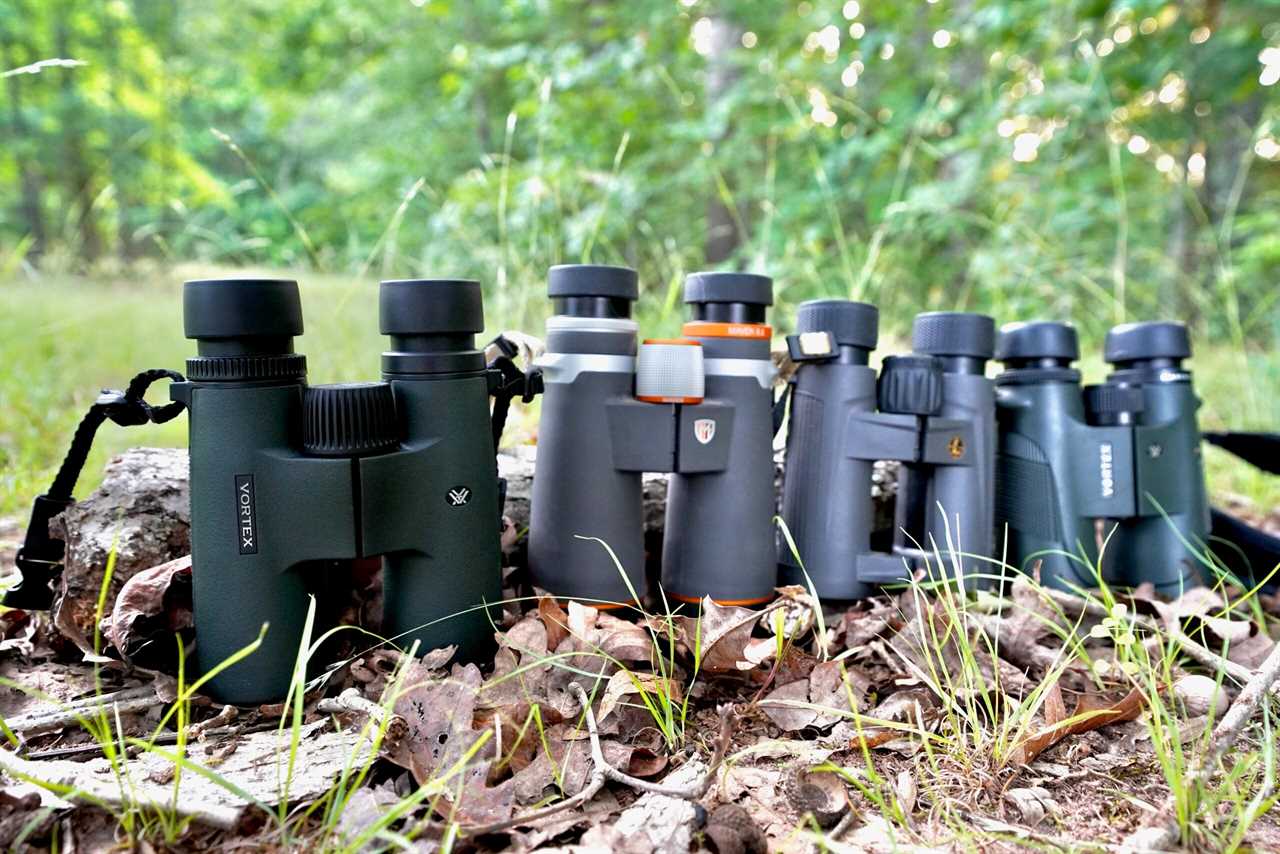
The Triumph (left) and the other binoculars used for comparison. Scott Einsmann
I then took the Triumph for some summer scouting at one of my local Wildlife Management Areas. There’s a dove field planted in sunflowers, and every night deer pour into it to eat the newly sprouted plants. My goal was to note where deer were entering the 500-yard-long field. With the Triumph, I could easily pick out deer making a cautious entry. I did notice that I had more eye fatigue than I’m used to having with the Maven B.6. You’ll have to really focus if you’re trying to count tines across a big field in fading light.
Read Next: Best Binoculars for Hunting
What the Vortex Triumph Binoculars Do Best
Who should buy the Vortex Triumph? If you have only $100 to spend on a binocular, the Triumph is a great choice for whitetail hunting, indoor archery, 3D archery, turkey hunting, and as a spare to keep in your truck. They’re also an excellent binocular to give to a kid just getting started in hunting.
If you’re trying to decide between the Triumph and a binocular costing about $250, you’ll just have to decide if that slight bump in performance is worth the cost. You’ll see a bigger difference as you step up to $500 to $600 binos and another leap at $1,000. Again, you’ll have to decide how much optical performance you need and can afford.
Where the Vortex Triumph Binoculars Can Improve
Who shouldn’t buy the Vortex Triumph? If you need the added brightness, reduced eye fatigue, and detail provided by $1,000 binoculars, then you shouldn’t buy this bino. Save your money and buy one of the quality $1,000 binos on the market.
Final Thoughts
The Triumph is a budget binocular, but a very good one. It has all the features you expect from a modern binocular and it punches above its price point for optical performance. It also outperformed previous generations of budget binoculars, so if you’ve been skeptical of cheap binos in the past, this one is worth a look.
The post Vortex Triumph HD Binocular Review: Testing Vortex’s New $100 Bino appeared first on Outdoor Life.
Articles may contain affiliate links which enable us to share in the revenue of any purchases made.
By: Scott Einsmann
Title: Vortex Triumph HD Binocular Review: Testing Vortex’s New $100 Bino
Sourced From: www.outdoorlife.com/gear/vortex-triumph-hd-binocular-review/
Published Date: Tue, 06 Jun 2023 17:26:03 +0000
----------------------------------------------
Did you miss our previous article...
https://manstuffnews.com/weekend-warriors/how-to-identify-bear-scat
 Backyard GrillingWeekend WarriorsAdvice from DadBeard GroomingTV Shows for Guys4x4 Off-Road CarsMens FashionSports NewsAncient Archeology World NewsPrivacy PolicyTerms And Conditions
Backyard GrillingWeekend WarriorsAdvice from DadBeard GroomingTV Shows for Guys4x4 Off-Road CarsMens FashionSports NewsAncient Archeology World NewsPrivacy PolicyTerms And Conditions
